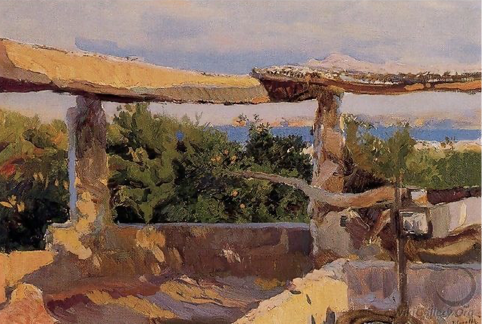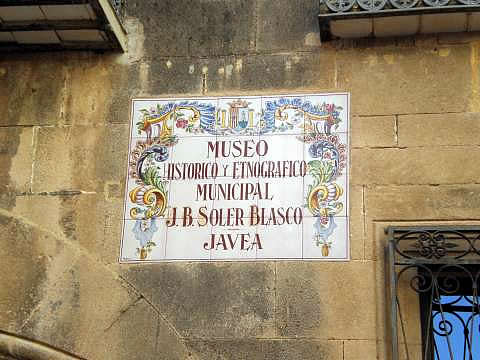|
For several years Sorolla, his family and a few servants would come from Madrid to spend long summer holidays in Javea. In 1905 pretty 23 year-old Ramona had been working for Sorolla for a year and was undeniably his favorite. So of course, she was one of the party.
One day, Ramona and Asunción, another servant, went to a nearby waterwheel to wash clothes for the family when suddenly they were approached by a tall, well-built young man who started to talk with Ramona, then quarrel with her, while she continued to do the washing. He followed them back to the house once they were done washing, carrying on the dispute. Suddenly he pulled out a Smith revolver and shot at her. Shocked, Ramona dropped the linen and was just about to run away when he fired again, hitting her directly in the stomach and knocking her to the ground. Stunned by his own deed, the man put the gun to his temple and shot himself. Hearing the shots, Sorolla and the family ran out to find a man lying dead, Ramona wounded on the ground and a panicking Asunción. They called for a doctor immediately but Ramona died before she could be taken to hospital. Nevertheless she did have the time to tell them what it was all about : before leaving Madrid, she said, she had broken off her relationship with Bartolomé, a Guardia Civil officer. Heartbroken and angry, he had taken 2 weeks off from work to follow her down to Javea to try to make her change her mind. This was a crime of jealousy and passion. Today we would call it gender violence. Sorolla was completely devastated by what had happened and retired to his room. He was so withdrawn and silent over the next few days that the family decided to close the house and return to Madrid, never to return to Javea again !
0 Comments
|
ACTIVITIES
Categories |
- Home
- Blogs
-
Projectes
- Premio de Investigación - Formularios de Inscripción
-
Traducciones Translations
>
-
DISPLAY PANELS - GROUND FLOOR
>
- THE STONE AGES - PALAEOLITHIC, EPIPALAEOLITHIC AND NEOLITHIC
- CAVE PAINTINGS (ARTE RUPESTRE)
- CHALCOLITHIC (Copper) & BRONZE AGES
- THE IBERIAN CULTURE (THE IRON AGE)
- THE IBERIAN TREASURE OF XÀBIA
- THE ROMAN SETTLEMENTS OF XÀBIA
- THE ROMAN SITE AT PUNTA DE L'ARENAL
- THE MUNTANYAR NECROPOLIS
- ARCHITECTURAL DECORATIONS OF THE PUNTA DE L'ARENAL
- THE ATZÚBIA SITE
- THE MINYANA SMITHY
- Translations archive
- Quaderns: Versión castellana >
- Quaderns: English versions >
-
DISPLAY PANELS - GROUND FLOOR
>
- Catálogo de castillos regionales >
- Exposició - Castells Andalusins >
- Exposición - Castillos Andalusíes >
- Exhibition - Islamic castles >
- Sylvia A. Schofield - Libros donados
- Mejorar la entrada/improve the entrance >
-
Historia y enlaces
-
Historía de Xàbia
>
- Els papers de l'arxiu, Xàbia / los papeles del archivo
- La Cova del Barranc del Migdia
- El Vell Cementeri de Xàbia
- El Torpedinament del Vapor Germanine
- El Saladar i les Salines
- La Telegrafía y la Casa de Cable
- Pescadores de Xàbia
- La Caseta de Biot
- Castell de la Granadella
- La Guerra Civil / the Spanish civil war >
- History of Xàbia (English articles) >
- Charlas y excursiones / talks and excursions >
- Investigacions del museu - Museum investigations
- Enllaços
- Enlaces
- Links
-
Historía de Xàbia
>
- Social media
- Visitas virtuales
- Tenda Tienda Shop



 RSS Feed
RSS Feed
